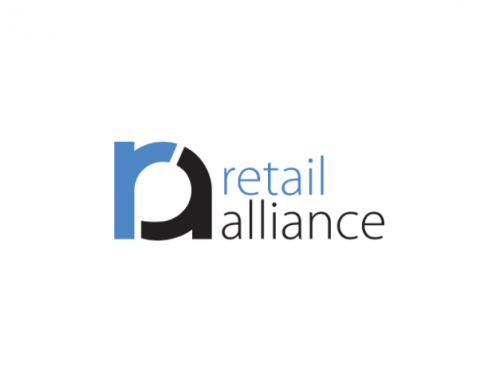From: KITCES.com
For financial advisors, it’s tough getting new clients. Not because financial advisors aren’t well-priced and offering a strong value proposition – as the typical financial advisor’s sky-high 90%+ (often 95%+, sometimes 97%+) retention rates can attest, the overwhelming majority of clients appear to be very happy with what they’re getting. The challenge is getting the attention of prospective new clients and standing out as a financial advisor from all the others pursuing the same lucrative long-term client opportunities. As a result, according to the recent 2022 Schwab Benchmarking study, the average independent RIA grew its client base at an average annual growth rate of just 5.1% over the past 5 years.
In turn, the struggle of advisors to drive organic growth has led to a number of other emerging trends around advisor growth strategies over the past decade. It has led to an immense rise in inorganic growth, as the DeVoe RIA Deal Book shows that advisor mergers and acquisitions are up more than double over the past 5 years and over 6X in the past 10. And the demand for M&A – coupled with rising valuations as a result of the demand outstripping the supply – has led to a shift of advisor budgets towards marketing, resulting in the emergence of a new crop of paid lead generation services for advisors from SmartAsset’s SmartAdvisor to Zoe Financial to IndyFin to WealthRamp and more.
The caveat, though, is that it still takes a lot to get the attention of consumers. In fact, a recent Kitces Research study on Advisor Marketing found that for established financial advisors, the average Client Acquisition Cost for a single new client is $4,056. And there’s a risk that cost will go even higher as even more advisors spend more on marketing in an attempt to jump-start their growth, and in an increasingly crowded marketplace of advisor lead generation solutions also emerge… all competing for the same consumer attention. Yet at the same time, with client acquisition costs so high and many advisory firms willing to pay as much as 25% of lifetime revenues to get a client, there remains a lot of revenue potential for lead generation services that can figure out how to break through the noise.
In this context, it’s notable that this month, another new lead generation service for advisors – AdvisorFinder – entered the fray. Similar to other lead generation competitors, AdvisorFinder offers a consumer-facing portal where individuals can come and find the ‘right’ financial advisor for themselves, filtered by various search criteria, and then reach out to contact the advisors they find of interest. Though notably – and unlike most other platforms – AdvisorFinder will not share consumer inquiries with a wide range of prospective advisors (which can then lead to an unpleasant onslaught of follow-up emails and calls to the consumer), and instead will “leave the consumer in the driver’s seat”, where the consumer initiates contact to their selected advisor(s) (and only their selected advisors) on their own terms.
What is perhaps more notable, though, is the unique way that AdvisorFinder is currently filtering the advisors in its marketplace for consumers to select – based not on where the advisor is located (‘what is your zip code’ isn’t even included as an option!), nor based on the advisor’s compensation model (though those details are included on the individual advisor profiles). Instead, advisors are filtered primarily by their specialization (a particular expertise like Retirement Income or College Planning or Tax Minimization Strategies), or their typical clientele (i.e., the advisor’s niche, such as retirees, tech employees, corporate executives, or divorcees). Or stated more simply, AdvisorFinder is not matching advisors based on where they are and what they charge, but instead based on who they serve and the kinds of problems they solve.
From the advisor perspective, the biggest appeal for AdvisorFinder may simply be its price – which launched initially with a $249/year subscription fee, that rose to ‘just’ $329/year in 2023 – the service is substantially less costly than others that charge advisors by the lead (which can add up quickly if there’s a lot of lead flow) or under a revenue-sharing agreement (which means advisors only pay when they get clients, but can add up to exponentially more in marketing costs in the long run). As a result, even if AdvisorFinder ‘just’ produces a single client for an advisor in a year (or every other year), it’s still an incredibly good deal relative to other marketing channels.
The caveat, however, is that AdvisorFinder does have to produce at least a client for each and every advisor on the platform, to make it worthwhile for them to keep paying at all. And when the average client acquisition cost for an established advisor is over $4,000, it remains very unclear how AdvisorFinder can sustainably generate an ongoing flow of new clients for all the advisors on its platform when it’s only charging 1/10th the price for a subscription in the first place. Because the reality is that the key to advisor lead generation is not in the consumer interface, per se, but the ability to scalably generate a growing volume of clients (to engage with the interface in the first place)… and the jury is still out on whether AdvisorFinder will be able to find a scalable marketing strategy to deliver, especially at its arguably-below-market price point that may not give the company enough cash to invest into its own marketing?
You can catch AdvisorFinder live on the Fervent Four Show on April 6th at 11:00 am. The podcast will be released on your favorite podcast player later that afternoon.






